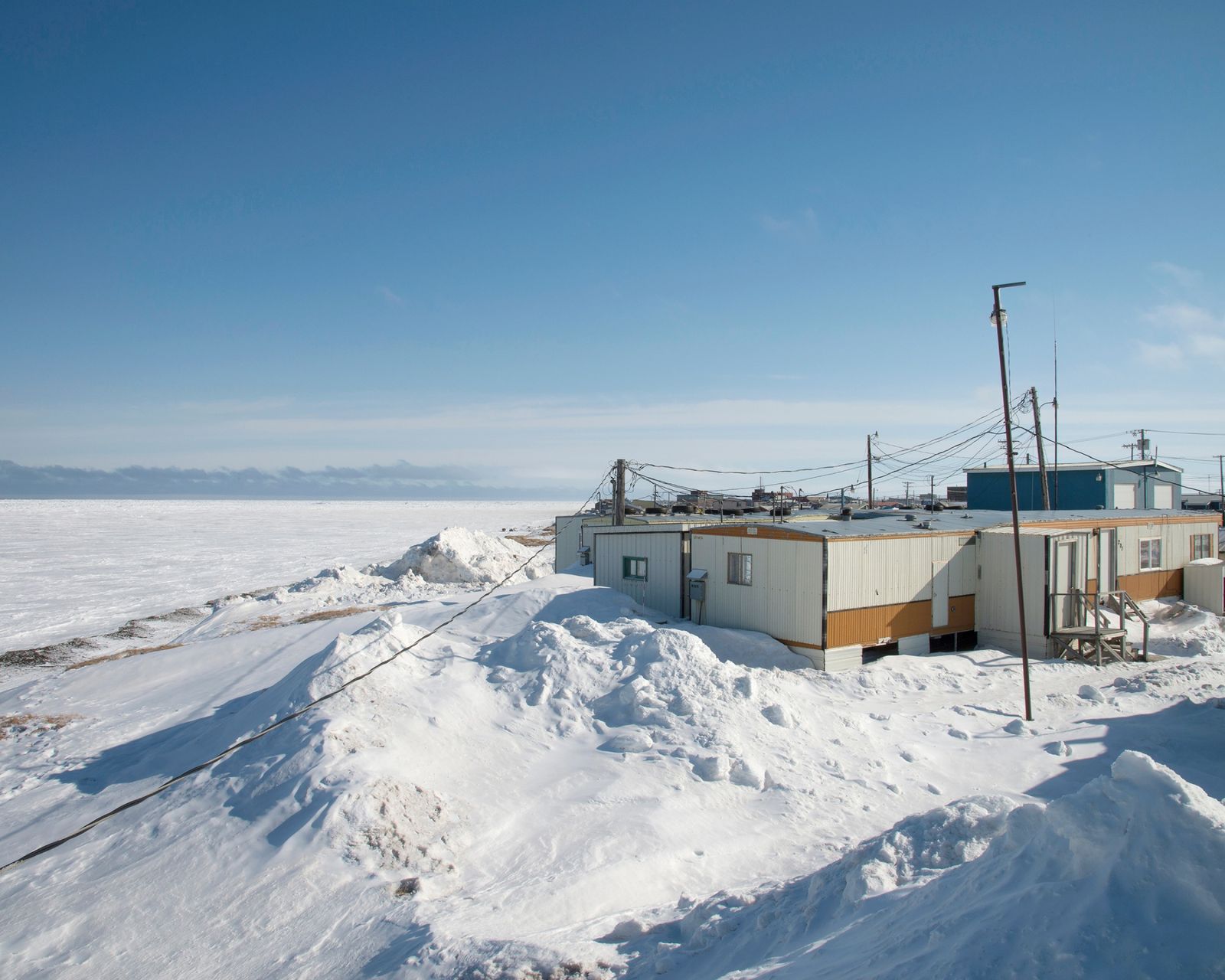
Elizabeth Pierce had a big dream. Stretch out the submarine cable that would give Alaska (and then Japan, Greenland, Canada, Britain, and so on) access to the fast Internet. The task is really very useful: outside the cities in Alaska, the Internet has nowhere worse, other countries also have nothing to brag about, especially if they want to access sites from America. A powerful submarine cable could help local sites and services become more competitive, and users could watch a YouTube video in 1080p and play their favorite Fortnight without ping.
Elizabeth Pearce "raised" more than $ 270 million from investors, inspired by her huge contracts with government organizations and telecom providers, for this good deed. There were more than $ 1.2 billion worth of contracts.
The problem was only that the leaders of these organizations later could not remember that they signed agreements with such conditions - or that they signed anything at all with Elizabeth. The startup gathered engineers and inventors, drove the ships to stretch the cable off the beaten path. And then his top managers learned that there was no trace of money. Because they never were.
Important thing
Fiber optic across the Arctic has been the dream of entrepreneurs of the decade. Increasing demand for broadband Internet has led giants such as Google, Microsoft, Facebook and Amazon to invest in the construction of submarine cables so that their services are in demand and do not lose to foreign competitors. Other companies are also not far behind - Huawei, for example, wanted to stretch a line 15,000 km long from Britain to South Africa, visiting 12 other countries along the way (then it was expelled from this project because of concerns about the influence of the Chinese government). The industry has been growing very rapidly in recent years, for the first time since the collapse of the dotcoms. Everyone wants to watch YouTube, Netflix and Facebook videos in maximum quality and without delay.
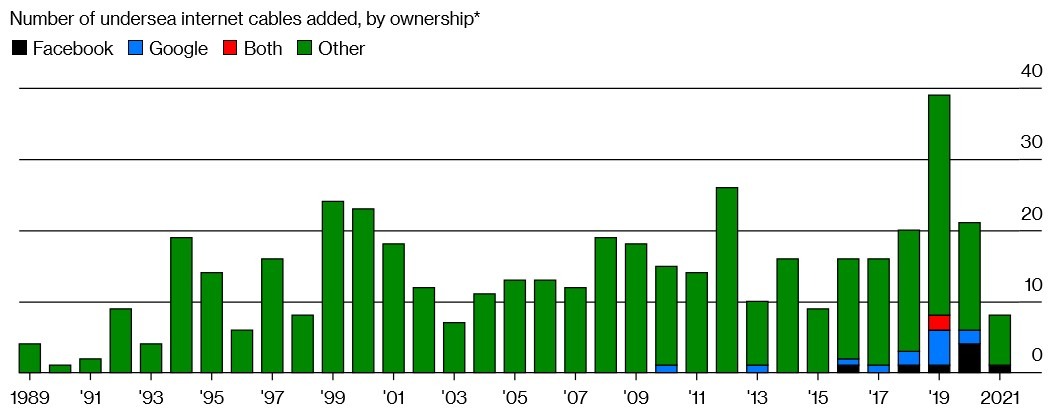
The pace of new cable construction
Unfortunately, most of these lines run along the Pacific or Atlantic Ocean, along well-established shipping routes. Scotland, Alaska and other parts of the world, where there are not many users and no stock exchanges, a very small part of the pie falls. The Trans-Arctic path could help with this, as well as make the world’s Internet more resistant to earthquakes, sabotage and accidents. In addition, the path from the main US data centers to hundreds of millions of users would be reduced by thousands of kilometers.
With this idea, Quintillion entered the market in 2012. Its founder, Elizabeth Pierce, decided to focus on her home state, Alaska. The cost of a gigabit connection there began at $ 70 per month, the satellite was slow and expensive. One of the company's engineers, Daniel Kerchbaum, explains:
If you wanted to watch the Game of Thrones, it was better to give your friend a bundle of DVDs so that he recorded the series and sent you by mail.
Global warming has made ice in the Arctic less impenetrable, gradually opening up more and more opportunities. Elizabeth Pierce and her partners decided that they could build a fiber-optic broadband network until no one else thought of it, and then sell it entirely to IT giants or local providers.
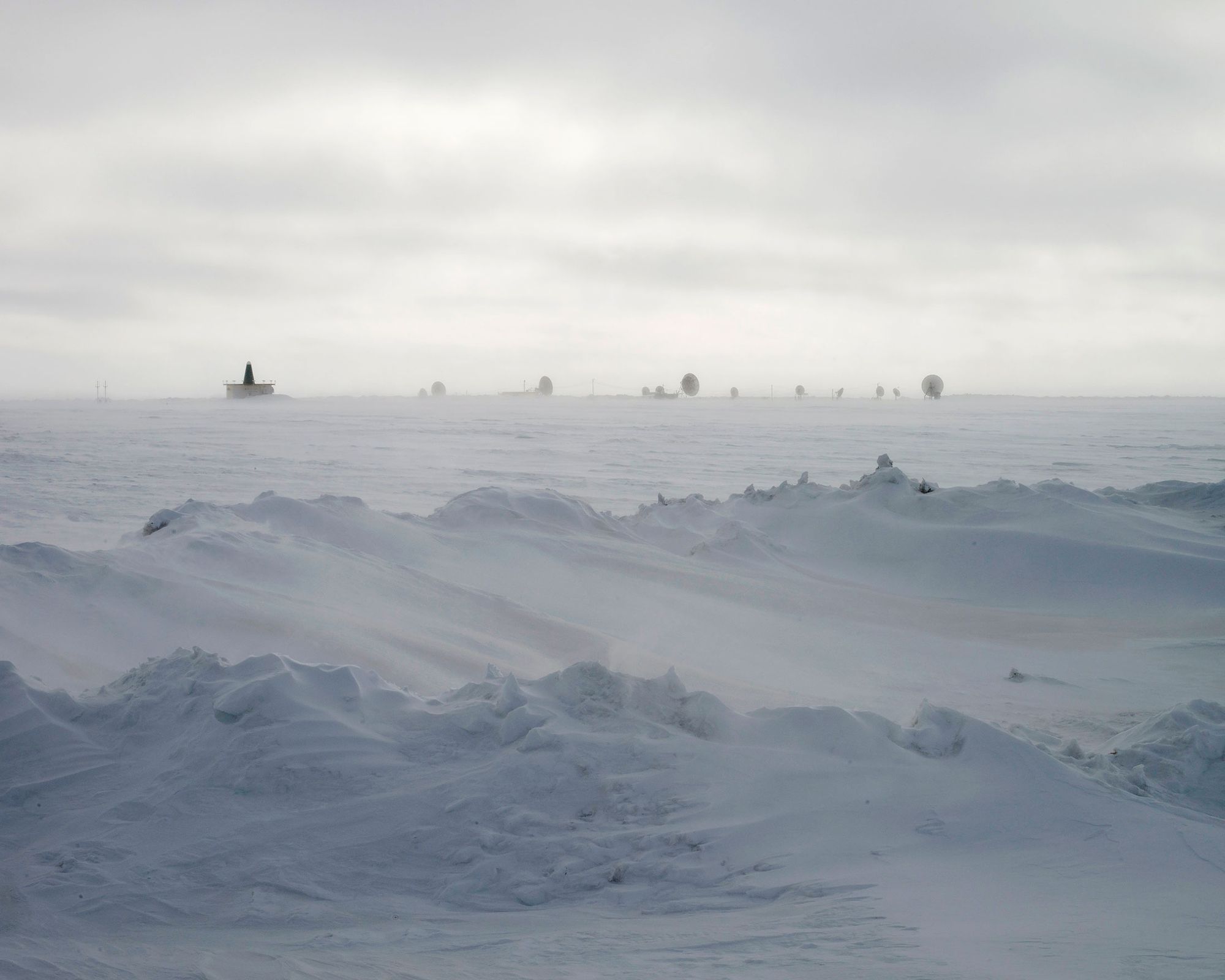
There will be internet here!
Most of 2013, the team spent on research, inspections, solving problems with environmentalists, coordinating cable routes with local tribes. As a result, it turned out that even without transarctic lines, covering Alaska with optics alone would require 14 ships and 275 permits from officials at various levels.
In general, the project is quite capable of a large company. Quintillion so far has not come close to her, but here the matter is small: get financing. The main thing is already there - the idea!
Pierce met with Canadian entrepreneurs, father and son Doug and Mike Cunningham, who also developed a startup in a similar direction. It was called Arctic Fiber Inc. (AFI). The two companies decided to become partners. Cunningham said they would be able to raise $ 640 million, and would be responsible for the international part of the construction - 15 thousand km of cable that would go from Japan to the UK. Elizabeth remained Alaska, the smallest, but also the most difficult segment.
Swim in the money
One participant in an industry conference recalls how he joked with friends that creating cables under the Arctic is something sci-fi, like in Jules Verne’s book. Elizabeth heard the conversation, went up and began to argue with the participant. He was perplexed: “My comment was so banal, just a stupid joke, but it was very evil, it began to prove something to all of us. It seemed to me she was very stressed. ”
None of the major venture capitalists invested in the Quintillion-AFI project until 2015. At the first stage, it was supposed to work on a market consisting of tiny Arctic societies and tribes. It was not clear how companies were going to recapture the huge costs. Alaska is a state twice the size of Texas, but its population is forty times smaller. It’s not very profitable to draw lines here.
Not understanding what to do, Cunningham suggested combining their companies. Elizabeth agreed, but in the end, the ownership of AFI was transferred to Quintillion, and Doug and Mike were excluded from the decision-making process. But Pierce promised them that since they have a significant part of the company, as soon as the project makes a profit, they will not be left over.
Pierce promised a lot of things. At a meeting with investment bank Oppenheimer, which had previously worked with Cunningham, the bank’s analysts told her that the maximum she could get on cable contracts in Alaska was $ 30 million. Pierce hit the table and said she would have at least $ 75 million a year. .
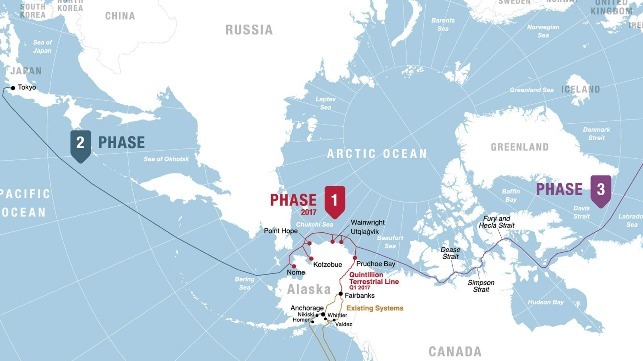
Quintillion Plans
At a meeting with CIP Capital, representatives of a financial institution said they would invest only if Pierce showed them the signed contracts guaranteeing her company a certain income. Elizabeth was able to convince the director of the company that the contracts would go soon, and by the beginning of 2015, CIP had invested $ 10 million in Quintillion.
Pierce forged his first signatures in May and June 2015, on a contract with the provider Matanuska, which serves several towns in southern Alaska. The head of Matanuska met with Pierce, but did not want to sign the contract, and took time to think. Elizabeth told her investors in New York that he was "nervous, but very happy with the deal." The next day, she uploaded a contract for hundreds of millions of dollars with the signature of the head of Matanuska to her personal account on Google Drive. She also said she was close to signing another gigantic deal with Arctic Slope Telephone, a nonprofit organization. Soon, this contract also appeared on Google Drive, also for hundreds of millions.
Pierce did such a scheme at least eight more times. The total amount of “contracts” exceeded $ 1 billion. Sometimes it completely falsified agreements that did not exist. In other cases, she signed these contracts, and then changed the key pages so that the amount received was an order of magnitude greater. Ten other Quintillion employees were not allowed to "bargain." She alone had a password to google disk with all scans of contracts. All printed copies were stored in her personal closet, which no one could open.
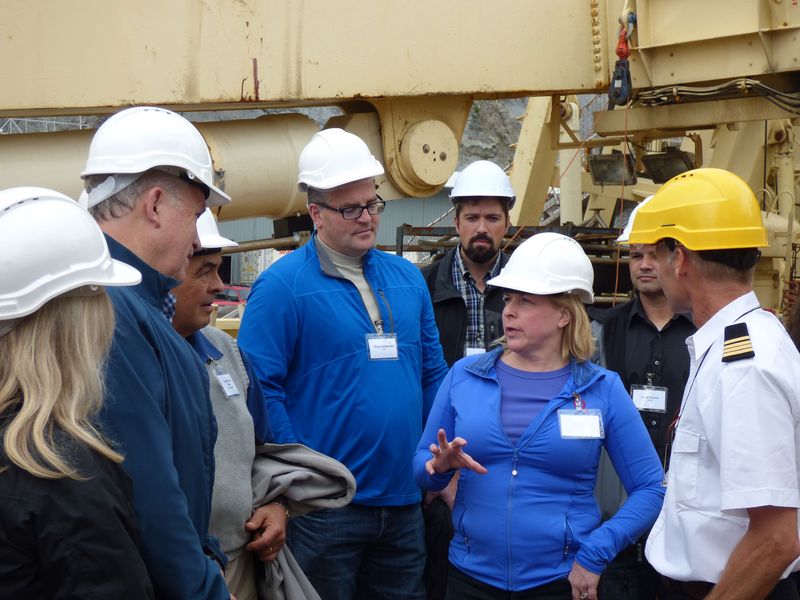
Elizabeth Pierce in 2016 at the port of Unalaska, explaining her idea to city mayors
When an employee specified a new $ 600 million contract, which, as Elizabeth Pierce said, she concluded with another television company in Alaska, she replied that they were not yet ready to transfer the money, but she had several other contracts “on the way”, which will soon bring the same amount. Another $ 270 million to continue the "work" she was given CIP Capital and the French investment bank Natixis SA.
Elizabeth has earned a reputation as a kind of angel of Alaska, attracting investors from all over the world. She went to conferences and on television, telling how soon the state would finally make the digital revolution, and become the indispensable point of distribution of the global Internet. She regularly met with the governor of Alaska, local telecoms, and mayors of cities through which the line was supposed to go.
Pierce's income at that time was at least $ 146,000 a year. She also received various bonuses and paid flights at the expense of the company.
In 2013, judging by the documents of the court, Elizabeth told her old acquaintance, Julian Jensen, about the investment opportunity that the transarctic cable opens up. He thought that the project was “strategically implemented.” In May of that year, he wrote her $ 325,000, a third of his savings, as an investment in Quintillion. Pierce deposited the money in a personal bank account. On the same day, judging by the documents, she opened a pension fund at Wells Fargo.
In 2015, Elizabeth found herself a new source of living money. Former barista and current Quintillion employee asked her about the investment. Pierce told her that if she transferred $ 40,000, she would receive 225 Quintillion shares. The employee collected money from the family, hoping that the investment will pay off when the cable is pulled. Pierce put the money in her Wells Fargo account.
In 2016, Quintillion for the money of CIP and Natixis finally began building an underwater cable network off the coast of Alaska. But the seabed was harder than expected, and the weather quickly deteriorated. The company was forced to stop the operation and postpone the project until next year.
Pull Pull
By mid-2017, Pierce ran out of excuses about the delay in the project. As in the fairy tale about the turnip, the cable simply did not stretch. Quintillion began invoicing for its hundred millionth contract. Lawyers for telecom companies and other Pierce clients have disputed these accounts. One of them contacted CIP Capital. An employee of the investment bank quickly went to check the agreement on Google’s disk Elizabeth. But all the files with the contracts from there disappeared. There is a mention in the logs that two days before that, “Elizabeth Pierce had moved 78 items to the Basket.”
A week later, bank lawyers came directly to Pierce. She brought her lawyer, and said that she could not recall the circumstances of the signing of each contract. But the amounts in them are correct.

Throughout 2017, despite the lack of activity on the shelf, Elizabeth Pierce acted as if everything was going according to plan. In April, she cut a red ribbon with a senator from Alaska Lisa Merkauski at the grand opening of the station for laying the cable in the oil town of Deadhorse (population 25 people). And calmly made presentations at conferences in the summer and autumn.
In April 2018, the U.S. Department of Justice announced the arrest of Elizabeth Pierce. Soon after, her family sold a house in Anchorage for $ 415,000 and bought a house in Texas, which was issued in the name of a former Quintillion employee.
The company’s interim CEO, George Tronsru, says they have not had contact with Elizabeth since. And they are trying in every way to distance themselves from her name. They managed to extend several agreements, and yet they extended a part of the cable network in Alaska. To connect the submarine cable to the land-laid fiber, Quintillion drilled a two-kilometer canal at a depth of 25 meters, from the ocean to a hatch buried deep in the snow. They are especially proud of this project.
Jens Lypeneks, head of Arctic Slope Telephone, praises the current Quintillion:
We were all here at dialup speed just a couple of years ago. Now our subscribers can easily stream Netflix, play Xbox online.
In the end, part of the first phase was over. Alaska got its submarine cable network extending off its coast. According to Quintillion estimates, it now provides modern Internet services to about 10,000 residents. Plus - to schools, hospitals and local businesses.
Current company executives never talk about Elizabeth Pierce. At Utkiagwick College (4,200), principal Brian Plessinger complains that switching to Quintillion fiber did not give him the desired result. “We pay $ 9,500 per month for just 10 megabits, with 2,000 students, that's not enough.” George Tronsru promises to rectify the situation, then calls somewhere.
September 30, after more than a year of ships, Pierce was taken into custody in Texas. She pleaded guilty to one case of fraud and eight cases of identity theft with aggravating circumstances. Elizabeth will serve five years in federal prison. Judging by the court, Quintillion contracts will bring the company $ 480 million less than Pierce said, but the company will reach the level of revenue promised in 2018 by 2023.

The shore of the Arctic Ocean, where submarine cables connect to fiber coming from the ground
The employees and acquaintances who invested in the Pier did not receive any money back. An employee who has lost $ 40,000 says that “I am devastated and crushed. I still can't believe what Elizabeth did. Alaska and the world really needed this system, and I also worked hard on it. ”
The company, which was founded by Elizabeth Pierce, is trying to restore its fallen reputation. The current CEO, George Tronsru, says that there is no trace of Elizabeth here. She only reminds herself of herself with bad headlines in newspapers and journalists who come to write something bad about the company.
It is unclear whether Quintillion will solve its initial task - to build a cable to Asia and Europe through the Northwest Passage. Tronsru says this goal has not changed yet, but will require an additional $ 800 million. In addition, the Finnish Cinia and the Russian MegaFon now want to implement a similar project. Also, the construction of the transarctic cable from the North Pole to the US coast was announced by the same Matanuska. She collects $ 600 million for it.
It seems that Elizabeth’s ideas were quite feasible, and there is a market for them. The behavior of Pierce was not much different from the actions of other founders and CEOs of startups who promise financiers of the mountain as soon as their concept proves its success. That is why it was so easy to trick investment banks and venture capital funds. Her problem was only in the methods.
One of Quintillion's former senior executives tells reporters:
The question is not how or why she did it, but why she thought it would get away with it.
And the conclusion from such a big story begs one. As in the case of another Elizabeth, Holmes from Theranos , if you promise something big and good, you do it confidently and with innocent eyes, there can be people in the world who believe in you.
PS We are not looking for investments, but we are also engaged in forwarding packages from America. Packages in a slightly different format, larger. From $ 12 to Russia, from $ 11 to Ukraine (any branch of Novaya Poshta). New Superfast packages arrive in 4-8 days. And for six months now we have been serving sellers from Russia - we accept your packages for sale on Amazon, eBay, Etsy and so on. From $ 2 per parcel .
